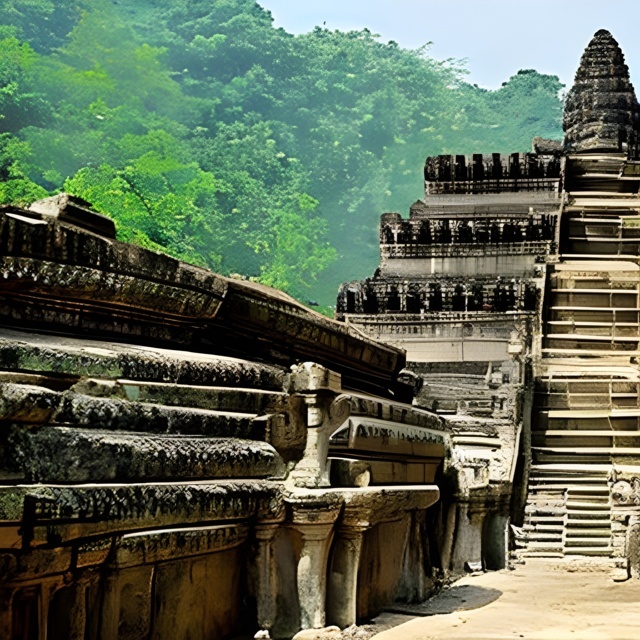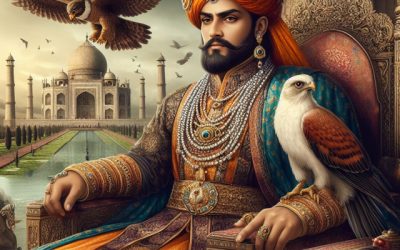The Funan Kingdom was an important yet mysterious civilisation that dominated mainland Southeast Asia from around the 1st to 6th centuries CE. Although the kingdom left few written records, archaeological discoveries and accounts from Chinese travellers provide fascinating glimpses into this advanced society. Let’s explore what we know about Funan and the legacy it left behind.
Origins of Funan
Funan is believed to have emerged around the 1st century CE in the Mekong River delta area of modern-day Cambodia and Vietnam. According to Chinese records, Funan controlled vital maritime trade routes, connecting China with India and the Middle East. The kingdom likely arose from local settlements but later expanded its influence through conquest and diplomacy.
Some scholars suggest Funan’s founders may have come from India or Southeast Asia’s Oc Eo region. Linguistic evidence indicates the people of Funan spoke Mon-Khmer languages related to modern Khmer. The name “Funan” itself may derive from the Chinese pronunciation of a local term meaning “mountain.”
Funan’s Government and Society
Funan operated as a loose network of city-states and settlements ultimately under the control of a paramount lord. The Funan rulers likely held absolute religious and political authority. However, they depended on local lords to govern their own communities while supplying tribute and military aid.
Chinese records described Funan as having a sophisticated, multicultural society engaged in brisk international trade. The Funanese people built large urban centres with canals, reservoirs, and temples. The population included native Mon-Khmer speakers as well as immigrants from across Asia. Society featured a religiously linked social hierarchy with an elite ruling class maintaining control.
Funan’s Economy and Technology
Funan’s location on bustling maritime trade routes allowed it to grow rich and cosmopolitan. Chinese chronicles noted that the Funanese people were highly skilled traders and sailors, using large vessels to transport goods throughout Southeast Asia. Archaeology reveals that Funan also relied on extensive networks of canals and waterways to transport people and goods inland.
Funan’s artisans and metalsmiths were highly skilled, creating jewellery and ornamental objects influenced by Indian, Chinese, and Hellenistic styles. Distinguished stone sculpture combined Indian and indigenous elements. Funan’s economy relied heavily on agriculture, including rice cultivation, animal husbandry, and fishing.
Funan adopted many technologies from abroad, including advanced ironworking techniques and construction methods using brick and laterite stone. Funan’s legacy also includes the earliest known Khmer-language inscriptions carved in Sanskrit script, attesting to a sophisticated bureaucratic system.
Religion and Culture in Funan
Religion profoundly influenced all aspects of Funan society. The Funanese ruling elite derived much of their authority from Hindu and Buddhist rituals and patronage. Based on archaeological finds, scholars believe Funan’s primary religions included Mahayana Buddhism, Shaivite Hinduism, and native cults honouring ancestral spirits. Chinese records noted the zeal of Funan’s people for worship and ritual celebrations.
Funan’s cultural brilliance reached its peak between the 4th and 6th centuries CE. Kings advertised their worldliness and military might through monumental architecture, including elaborate brick temple-mountains. The most impressive remains are the temples of Ba Phnom in Prey Veng Province. Carved sandstone statues and bustling sea trade enriched Funan’s cosmopolitan culture.
Legacy of Funan
After dominating mainland Southeast Asia for centuries, Funan’s power eventually declined. Pressures from neighbours combined with internal strife caused Funan to fracture into smaller polities by the early 7th century CE. However, Funan’s cultural legacy lived on. Later kingdoms like Chenla and Angkor adopted Funan’s social systems, art forms, and irrigation technology.
Funan represents one of Southeast Asia’s earliest and most influential civilisations. Though key details remain unknown, it left a lasting mark on the region. Funan connected mainland Southeast Asia to vast trade networks, facilitating the transmission of ideas, religions, and technologies across Asia. The kingdom helped nurture the brilliant Khmer civilisation that would later arise in Cambodia. Today, archaeologists continue working to unravel the mysteries of this enigmatic empire.
References
– Higham, C., 2014. Early Mainland Southeast Asia: From First Humans to Angkor. Bangkok: River Books.
– Jacques, C. and Lafond, P., 2007. The Khmer Empire: Cities and Sanctuaries, Fifth to Thirteenth Century. Bangkok: River Books.
– Lustig, E., 2009. State Formation in Early Maritime Southeast Asia: A Consideration of the Theories and the Data. Bijdragen tot de taal-, land- en volkenkunde, 165(2/3), pp.289-313.
– Manguin, P., 2016. Trading Ships of the South China Sea. Journal of the Economic and Social History of the Orient, 36(3), pp.253–280.
– Stark, M., 2006. Early Mainland Southeast Asian Landscapes in the First Millennium A.D. Annual Review of Anthropology, 35(1), pp.407–432.
Tags
Divi Meetup 2019, San Francisco
Related Articles
Unappreciated Greatness
Life and Legacy of Jahangir of the Mughal Empire. Jahangir ruled over one of the largest empires in human history during his lifetime, yet few people outside of South Asia have heard of him. I aim to shed light on the life and legacy of this remarkable figure,...
The Plague Doctor’s Diary
A Personal Account of the Turin Epidemic of 1656. I am writing this diary to record my experiences and observations as a plague doctor in Turin, the capital of the Duchy of Savoy, during the terrible epidemic that has afflicted this city and its surroundings since the...
The Timeless Beauty of Bustan
Unveiling the Secrets of Saadi Shirazi's Masterpiece.In the realm of Persian literature, few works have captured the essence of love, spirituality, and morality quite like Bustan (The Orchard) by Saadi Shirazi. This 13th-century masterpiece has left a lasting impact...
Stay Up to Date With The Latest News & Updates
Explore
Browse your topics of interest using our keyword list.
Join Our Newsletter
Sign-up to get an overview of our recent articles handpicked by our editors.
Follow Us
Follow our social media accounts to get instant notifications about our newly published articles.









